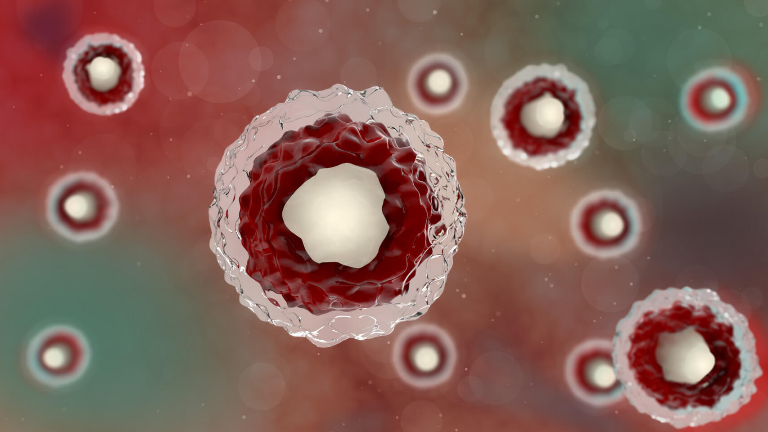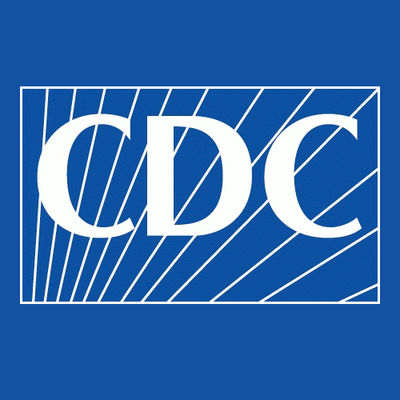预约演示
更新于:2025-05-07
Rubella Syndrome, Congenital
先天性风疹综合征
更新于:2025-05-07
基本信息
别名 CRS、Congenital Rubella、Congenital Rubella Syndrome + [35] |
简介 Transplacental infection of the fetus with rubella usually in the first trimester of pregnancy, as a consequence of maternal infection, resulting in various developmental abnormalities in the newborn infant. They include cardiac and ocular lesions, deafness, microcephaly, mental retardation, and generalized growth retardation. (From Dorland, 27th ed) |
关联
2
项与 先天性风疹综合征 相关的药物靶点- |
作用机制 免疫刺激剂 |
在研机构 |
原研机构 |
非在研适应症- |
最高研发阶段临床前 |
首次获批国家/地区- |
首次获批日期1800-01-20 |
靶点- |
作用机制 免疫刺激剂 |
在研机构- |
在研适应症- |
最高研发阶段无进展 |
首次获批国家/地区- |
首次获批日期1800-01-20 |
5
项与 先天性风疹综合征 相关的临床试验CTRI/2023/03/050820
A prospective cohort study to apprise the prevalence of congenital infections and genetic abnormalities of fetus: Acquaint to prevent the congenital anomalies.
开始日期2023-04-30 |
NCT04183114
Immunogenicity & Safety of Bio Farma's Measles-Rubella (MR) Vaccine in Indonesian Infants (Bridging Study)
Thus study is a clinical trial for Measles and Rubella vaccine that will be used inIndonesian National Program of Immunization. The study design will be randomized, observer blind, prospective intervention study.
开始日期2019-09-03 |
申办/合作机构 |
NCT03071575
Assessing Immunogenicity of Measles-Rubella Vaccine at 6 and 9 Months of Age
This is an open-label, randomized, 2-arm clinical trial in healthy infants in Bangladesh. The primary purpose of the study is to assess the immunogenicity of measles-rubella (MR) vaccine when delivered at 6 months. In addition, the study will establish the equality of MR vaccine seroconversion administered at 9 months following administration of an earlier MR vaccine dose at 6 months of age compared to MR vaccine dose administered at 9 months without previous MR vaccination. This study will also provide additional data on safety and tolerance of MR vaccine given at 6 months, and impact of maternal antibodies on immunogenicity of MR vaccine at 6 months.
Primary objectives:
To assess immunogenicity of MR vaccine at 6 months of age
To assess immunogenicity of MR vaccine at 9 months of age among children without prior measles and rubella vaccination, compared with MR vaccine immunogenicity among those who had a prior MR vaccination at 6 months of age
Secondary objectives
To assess the frequency of adverse reactions following administration of MR vaccine at 6 months
To compare the immunogenicity of the MR vaccine first dose administered at 6 months vs at 9 months.
To assess the proportion of mothers with undetectable, detectable and protective levels of measles and rubella antibodies
To determine the extent of variation in measles antibodies in women of child bearing age in a population with a long standing measles vaccination program
To determine the extent of variation in rubella antibodies in women of child bearing age in a population where rubella vaccine have been recently introduced
To determine if variation in antibody levels in infants at 6 months is predominately explained by variation in starting antibody levels in the mother in this population
To estimate the half-life of decay of measles and rubella antibodies in infants
Primary objectives:
To assess immunogenicity of MR vaccine at 6 months of age
To assess immunogenicity of MR vaccine at 9 months of age among children without prior measles and rubella vaccination, compared with MR vaccine immunogenicity among those who had a prior MR vaccination at 6 months of age
Secondary objectives
To assess the frequency of adverse reactions following administration of MR vaccine at 6 months
To compare the immunogenicity of the MR vaccine first dose administered at 6 months vs at 9 months.
To assess the proportion of mothers with undetectable, detectable and protective levels of measles and rubella antibodies
To determine the extent of variation in measles antibodies in women of child bearing age in a population with a long standing measles vaccination program
To determine the extent of variation in rubella antibodies in women of child bearing age in a population where rubella vaccine have been recently introduced
To determine if variation in antibody levels in infants at 6 months is predominately explained by variation in starting antibody levels in the mother in this population
To estimate the half-life of decay of measles and rubella antibodies in infants
开始日期2017-03-09 |
申办/合作机构 |
100 项与 先天性风疹综合征 相关的临床结果
登录后查看更多信息
100 项与 先天性风疹综合征 相关的转化医学
登录后查看更多信息
0 项与 先天性风疹综合征 相关的专利(医药)
登录后查看更多信息
2,023
项与 先天性风疹综合征 相关的文献(医药)2025-12-31·Expert Review of Vaccines
A journey worth taking: global eradication of measles, rubella and congenital rubella syndrome
作者: Durrheim, David N. ; Andrus, Jon Kim
2025-03-20·Revista Panamericana de Salud Pública
Lecciones aprendidas en la implementación de campañas de vacunación contra el sarampión y la rubéola en las Américas
Article
作者: Pastor, Desirée ; Rocha Queiroz Lemos, Daniele ; Whittembury, Álvaro ; Durón, Regina
2025-02-20·The Journal of Infectious Diseases
How to Prevent Rubella Epidemics and Congenital Rubella Syndrome: Lessons From 42 Years of Longitudinal Epidemiology in Osaka Prefecture, Japan (1982–2023)
Article
作者: Kanbayashi, Daiki ; Motomura, Kazushi ; Kaida, Yuko ; Kase, Tetsuo ; Takahashi, Kazuo ; Okayama, Fumika ; Komano, Jun ; Miyoshi, Tatsuya ; Ikuta, Kazuyoshi ; Kurata, Takako
6
项与 先天性风疹综合征 相关的新闻(医药)2024-05-29
An international team developed a new model, based on a case study of Nigeria, that may help public health officials accelerate the introduction of rubella vaccination in countries that have yet to do so.
When public health officials make policies about when and how vaccination programs are implemented, they must weigh the benefits and risks of how infectious diseases spread throughout the country. However, these analyses are often based on national-level data and, in some countries, may overlook nuances at the local level.
A new analysis by an international team, including Penn State researchers, revealed that the resulting recommendations may keep some countries from realizing the benefits of vaccination and globally eradicating diseases, such as rubella -- a contagious viral infection that causes mild symptoms in children. The team examined data from Nigeria, one of 19 countries that hasn't yet introduced rubella vaccination, as a case study. Their findings were published in the journal Vaccine.
"It's this interesting challenge where rubella is a mild disease if you get it as a kid, but it's high risk if you get it as an adult," said senior author Matthew Ferrari, professor of biology and director of the Center for Infectious Disease Dynamics at the Huck Institutes of Life Sciences at Penn State. "All of the policy surrounding rubella vaccination has been guided by that risk in adults, which has been holding back the benefit of rubella vaccination in some countries."
The primary concern among adults is the potential risk for congenital rubella syndrome (CRS), a serious health condition that can occur if a pregnant person contracts the virus. When an infectious disease like rubella is common, people are more likely to contract it earlier in life. And because the rubella virus is immunizing, those who are infected as children won't have pregnancies at risk of CRS when they are older.
Vaccination, on the other hand, reduces the amount of circulating virus, meaning individuals who were not vaccinated as children are less likely to be infected with rubella by adolescence or adulthood, Ferrari explained. As a result, even as the total number of rubella cases goes down with vaccination, the number of rubella infections in people of reproductive age -- who were neither infected nor vaccinated as children -- increases, putting those pregnancies at risk of CRS. Because of this complex dynamic, the World Health Organization (WHO) recommends that countries demonstrate that they can achieve a coverage level of 80% or greater, through either routine immunization or supplemental campaigns, before introducing rubella vaccination. The conventional wisdom has been that when vaccination coverage is above this threshold, the reduced risk of CRS due to less rubella virus offsets the paradoxical increase in CRS risk because infections tend to happen later in life, Ferrari explained.
The research team, working in partnership with the U.S. Centers of Disease Control and Prevention and the Nigeria Centre for Disease Control and Prevention, studied the epidemiology of rubella in Nigeria. Rubella is a comparatively rare disease, so it's difficult to quantify the potential harm and risk of CRS. These assessments are further complicated by the fact that Nigeria, Ferrari said, is a country with disparate ranges of wealth, vaccination coverage, health care access and birth rates, all of which play a role in infection and CRS risk.
To gain a better understanding of the factors at play, the team analyzed data from a nationally representative serosurvey, which detects the presence of antibodies in blood. The data allowed the researchers to see how many people, particularly women of reproductive age, had rubella antibodies, how many were potentially at risk of rubella infection and where the infection risk was greatest geographically. They identified regional differences in transmission between the northern versus southern part of the country, finding that transmission in the north was two-times higher compared to the south. They were also able to estimate the number of pregnancies affected by rubella infection today.
"We grounded the current infection risk and potential pregnancies at risk in strong empirical data and real-world phenomena," Ferrari said. "Parts of the country can already vaccinate more than 80% of kids, based on their current rate of measles vaccination, but low vaccination coverage in the north is a barrier to introduction across the whole country under the current recommendation."
What's more, the concern about increased CRS cases may not be as bad as conventionally believed, Ferrari noted. The team's new estimates of transmission rates show that the 80% threshold is conservative and that introducing a rubella vaccination program in Nigeria today could reduce the number of CRS cases by thousands in the first five years. "Some states could see CRS risk increase by hundreds of cases," he said, "but that increased risk would not come to fruition until 10 years down the road" -- providing a decade for public health officials to implement policies and programs to prevent this possibility.
"Strengthening and improving routine immunization programs and advancing them everywhere in the world is a benefit to everyone in the world. The more we do this, the elimination of rubella as a virus on this planet is entirely feasible," Ferrari said.
2023-05-05
近日,ImmunoGen宣布了其在研疗法ELAHERE的MIRASOL Ⅲ期确证试验GOG 3045/ENGOT OV-55的积极数据,该试验旨在评估ELAHERE(mirvetuximab soravtansine-gynx)与化疗相比,在已接受一至三线治疗的叶酸受体α(FRα)阳性铂类耐药卵巢癌患者中的安全性和有效性。基于本次积极数据,ImmunoGen计划在欧洲提交市场授权申请(MAA)及在美国提交补充生物制剂许可申请(sBLA),以便推进ELAHERE进入常规批准。
卵巢癌是卵巢肿瘤的一种恶性肿瘤,是指生长在卵巢上的恶性肿瘤,其中90%~95%为卵巢原发性的癌,另外5%~10%为其它部位原发的癌转移到卵巢。虽然卵巢癌的发病率低于宫颈癌和子宫内膜癌居妇科恶性肿瘤的第三位,但死亡率却超过宫颈癌及子宫内膜癌之和,高居妇科癌症首位,是严重威胁妇女健康的最大疾患。
据统计,在美国每年大约有20,000名患者被确诊卵巢癌,13,000名患者死亡。大多数患者出现晚期疾病时通常会接受手术,然后进行铂类化疗。然而,大多数患者最终会发展成难以治疗的铂类耐药性疾病。在这种情况下,标准护理单药化疗可导致低反应率、短反应持续时间和显著毒性。
ELAHERE是目前唯一获得III期临床数据的FRαADC(抗体药物偶联物)类药物,通过特异性识别肿瘤细胞表面的靶标蛋白,释放药物分子,进而实现对肿瘤细胞的精确打击,开创了卵巢癌治疗新途径。LAHERE于去年11月获FDA加速批准上市,随后被2023年最新版NCCN指南首选推荐用于单药或联合治疗FRα阳性PROC(铂类耐药性卵巢癌)。
本次报道的MIRASOL(NCT04209855)是一项关于ELAHERE对比研究者选择(IC)的单药化疗(紫杉醇、脂质体阿霉素或托泊替康)就卵巢癌治疗的随机Ⅲ期试验。受试者包括肿瘤表达高水平FRα的铂类耐药以及既往接受过最多三种方案治疗的卵巢癌患者。在所有受试者中,14%的患者曾接受过一线治疗,39%的患者曾接受过两线治疗,47%的患者曾接受过三线治疗;62%的患者曾接受过bevacizumab治疗;55%的患者之前接受过PARP抑制剂治疗。MIRASOL的主要终点是无进展生存期(PFS),主要次要终点包括客观反应率(ORR)和总生存期(OS)。
截至2023年3月6日的数据显示,受试者OS的中位随访时间为13.1个月,ELAHERE治疗组有14%的患者仍在接受给药,而IC化疗组只有3%;与IC化疗相比,ELAHERE在统计学上显示出明显的、有临床意义的OS改善。截至2023年3月6日,共报告了204例OS事件,ELAHERE组的中位OS为16.46个月,而IC化疗组为12.75个月,危险比(HR)为0.67,P=0.0046。这表明与IC化疗组相比,ELAHERE组的死亡风险降低了33%。
与IC化疗相比,ELAHERE在PFS方面有统计学意义和临床意义的改善,危险比为0.65(P<0.0001),表明与IC化疗组相比,ELAHERE将肿瘤进展或死亡的风险降低了35%。ELAHERE治疗组的中位PFS为5.62个月,而IC化疗组为3.98个月;ELAHERE组的ORR为42.3%,包括12例完全反应(CRs),而IC化疗组的ORR为15.9%,没有发生CRs。ELAHERE的安全事件主要包括低级别的眼部和胃肠道事件,没有发现新的安全信号。并且与IC化疗相比,ELAHERE与以下事件的发生率较低:3级或以上的治疗突发不良事件(TEAEs)(42% vs 54%);严重不良事件(24% vs 33%);以及导致研究药物停用的TEAEs(9% vs 16%)。
俄克拉荷马大学肿瘤科教授,TSET/Sarah Cannon一期项目主任Kathleen Moore评论:“我相信来自MIRASOL试验的数据是突破性的,证明了ELAHERE在所有治疗终点上都优于化疗,特别是总生存期,建立在SORAYA试验中先前报告的ELAHERE的临床效益之上。去年ELAHERE的加速批准是这种疾病治疗领域的一个范式转变,我相信,基于MIRASOL的数据,ELAHERE有可能成为FRα阳性、铂类抗性卵巢癌患者的新治疗标准。对于所有的卵巢癌患者来说,其FRα状态是一类必须知道的疾病因素,对于那些铂类耐药检测呈阳性的患者,我相信ELAHERE有潜力成为他们的首选治疗选择。“
参考资料:https://investor.immunogen.com/news-releases/news-release-details/elaherer-demonstrates-overall-survival-benefit-phase-3-mirasol

抗体药物偶联物临床结果
2023-04-27
Once approved, Columvi will be the first CD20xCD3 T-cell-engaging bispecific antibody available to treat people in Europe with this aggressive lymphoma
The recommendation is based on results from the phase I/II NP30179 study, where Columvi given as a fixed course induced early and long-lasting complete responses in people with heavily pre-treated or refractory diffuse large B-cell lymphoma1
Columvi is part of Roche’s industry-leading CD20xCD3 T-cell-engaging bispecific development programme, which aims to transform the treatment experience for people with blood cancers using off-the-shelf and fixed-duration options
Roche (SIX: RO, ROG; OTCQX: RHHBY) announced today that the European Medicines Agency’s Committee for Medicinal Products for Human Use (CHMP) has recommended the approval of Columvi® (glofitamab), for the treatment of adult patients with relapsed or refractory (R/R) diffuse large B-cell lymphoma (DLBCL) after two or more lines of systemic therapy. Columvi has the potential to change the current standard of care in DLBCL. As well as inducing early and long-lasting responses in people with heavily pre-treated or refractory DLBCL, potentially allowing patients a treatment free period, Columvi is designed to be given for a fixed period of time so that people know when their treatment will end. It is also an off-the-shelf therapy, meaning that people do not have to wait for cell collection and genetic engineering before starting treatment, which could be particularly important for patients who are at a high-risk of their disease progressing. A final decision is expected from the European Commission (EC) in the near future.
“New therapeutic options that are readily and broadly available are urgently needed for people with relapsing diffuse large B-cell lymphoma, which can become fatal without immediate treatment,” said Levi Garraway, M.D., Ph.D., Roche’s Chief Medical Officer and Head of Global Product Development. “The CHMP’s recommendation for Columvi brings us closer to providing a new, fixed-duration therapy for people with diffuse large B-cell lymphoma that induces early and long-lasting responses.”
DLBCL is an aggressive (fast-growing) type of lymphoma and is one of the most prevalent types of blood cancer among adults.2 Each year in Europe, an estimated 36,000 people are diagnosed with DLBCL.3 While many people with DLBCL are responsive to initial treatment, four out of ten are not cured with the current frontline standard of care, and the majority of those who require subsequent lines of therapy have poor outcomes.4,5 Once approved, fixed-duration Columvi will be the first CD20xCD3 T-cell-engaging bispecific antibody available to treat people in Europe with this aggressive type of lymphoma following multiple prior lines of therapy.
The CHMP recommendation is based on positive results from a pivotal cohort in the phase I/II NP30179 study, where Columvi given as a fixed-course induced early and long-lasting responses in people with R/R DLBCL. Overall, 83.3% of patients were refractory to their most recent therapy, 90% were refractory to any previous line of therapy, and about one-third (35.2%) had received prior CAR T-cell therapy. Results showed that Columvi given as a fixed course induced a complete response (CR; a disappearance of all signs of cancer) in 35.2%
(n =38/108) of people and 50% (n=54/108) achieved an overall response (OR; the combination of CR and partial response, a decrease in the amount of cancer in their body). Among those who achieved a CR, 74.6% (95% CI: 59.19-89.93) continued to experience a response at 12 months, while the median duration of CR was not reached. The median follow-up for duration of response (DOR) was 12.8 months. Median time to first CR was 42 days (95% CI: 41-47). The most common adverse events (AEs) were cytokine release syndrome (CRS; 64.3%), neutropenia (a reduction in white blood cells [37.7%]), anaemia (30.5%) and thrombocytopenia (low blood platelet count [24.7%]). CRS was generally low grade (Grade 1: 48.1%; Grade 2: 12.3%). One patient discontinued treatment due to CRS.1
Additional data from a larger cohort in the NP30179 study, published in the New England Journal of Medicine, reinforce the durability of Columvi. Fixed-duration Columvi resulted in early and long-lasting responses in people with heavily pre-treated or refractory DLBCL, with 39.4% of patients (n=61/155) achieving a CR and a median DOR of 18.4 months. Median time to first CR was 42 days (95% CI: 42-44), with the majority of responses reported at the first scheduled response assessment (approximately 1.4 months after the start of treatment). Half of patients (51.6%; n=80/155) achieved an OR. The most common AE was CRS, which was generally low grade (Grade 1: 47.4%; Grade 2: 11.7%) and occurred at initial doses. Columvi-related AEs leading to treatment discontinuation occurred in 3.2% of patients.6
Columvi was recently approved by Health Canada for the treatment of adult patients with R/R DLBCL not otherwise specified, DLBCL arising from follicular lymphoma, or primary mediastinal B-cell lymphoma, who have received two or more lines of systemic therapy and are ineligible to receive or cannot receive CAR T-cell therapy or have previously received CAR T-cell therapy. Additionally, the U.S. Food and Drug Administration (FDA) accepted Genentech’s Biologics License Application and granted priority review for glofitamab for the treatment of people with R/R large B-cell lymphoma. The U.S. FDA is expected to make a decision on approval by 1 July 2023. Submissions to additional health authorities worldwide are ongoing.
Columvi is part of Roche’s broad and industry-leading CD20xCD3 T-cell-engaging bispecific antibody clinical development programme. Roche’s portfolio also includes Lunsumio® (mosunetuzumab), which was granted accelerated approval by the U.S. FDA in December 2022 and conditional marketing authorisation by the EC in June 2022 for the treatment of adult patients with R/R follicular lymphoma after two or more lines of systemic therapy.
In an effort to help more patients in need of new treatment options, Roche continues to expand Columvi’s clinical development programme, which includes the phase III STARGLO trial, evaluating Columvi in combination with gemcitabine and oxaliplatin (GemOx) versus rituximab in combination with GemOx in people with second-line plus DLBCL who are ineligible for autologous stem cell transplant. Additional phase III studies are also planned, including in first-line DLBCL.
About Columvi® (glofitamab)
Columvi is an investigational CD20xCD3 T-cell-engaging bispecific antibody designed to target CD3 on the surface of T-cells and CD20 on the surface of B-cells. Columvi was designed with a novel 2:1 structural format. This T-cell-engaging bispecific antibody is engineered to have one region that binds to CD3, a protein on T-cells, a type of immune cell, and two regions that bind to CD20, a protein on B-cells, which can be healthy or malignant. This dual-targeting brings the T-cell in close proximity to the B-cell, activating the release of cancer cell-killing proteins from the T-cell. A robust clinical development programme for Columvi is ongoing, investigating the molecule as a monotherapy and in combination with other medicines for the treatment of people with B-cell non-Hodgkin lymphomas, including diffuse large B-cell lymphoma and other blood cancers.
About the NP30179 study
The NP30179 study [NCT03075696] is a phase I/II, multicentre, open-label, dose-escalation and expansion study evaluating the safety, efficacy and pharmacokinetics of Columvi® (glofitamab) in people with relapsed or refractory diffuse large B-cell lymphoma. Outcome measures include complete response rate by an independent review committee (primary endpoint), overall response rate, duration of response, progression-free survival, safety, and tolerability (secondary endpoints).
About diffuse large B-cell lymphoma (DLBCL)
DLBCL is the most common form of non-Hodgkin lymphoma (NHL), accounting for about one in three cases of NHL. DLBCL is an aggressive (fast-growing) type of NHL.2 While it is generally responsive to treatment in the frontline, as many as 40% of people will relapse or have refractory disease, at which time salvage therapy options are limited and survival is short.4,5 Each year in Europe, it is estimated that 36,000 people are diagnosed with DLBCL.3
About Roche in haematology
Roche has been developing medicines for people with malignant and non-malignant blood diseases for more than 20 years; our experience and knowledge in this therapeutic area runs deep. Today, we are investing more than ever in our effort to bring innovative treatment options to patients across a wide range of haematologic diseases. Our approved medicines include MabThera®/Rituxan® (rituximab), Gazyva®/Gazyvaro® (obinutuzumab), Polivy® (polatuzumab vedotin), Venclexta®/Venclyxto® (venetoclax) in collaboration with AbbVie, Hemlibra® (emicizumab), Lunsumio® (mosunetuzumab) and Columvi® (glofitamab). Our pipeline of investigational haematology medicines includes a T-cell-engaging bispecific antibody cevostamab, targeting both FcRH5 and CD3; Tecentriq® (atezolizumab), a monoclonal antibody designed to bind with PD-L1 and crovalimab, an anti-C5 antibody engineered to optimise complement inhibition. Our scientific expertise, combined with the breadth of our portfolio and pipeline, also provides a unique opportunity to develop combination regimens that aim to improve the lives of patients even further.
About Roche
Founded in 1896 in Basel, Switzerland, as one of the first industrial manufacturers of branded medicines, Roche has grown into the world’s largest biotechnology company and the global leader in in-vitro diagnostics. The company pursues scientific excellence to discover and develop medicines and diagnostics for improving and saving the lives of people around the world. We are a pioneer in personalised healthcare and want to further transform how healthcare is delivered to have an even greater impact. To provide the best care for each person we partner with many stakeholders and combine our strengths in Diagnostics and Pharma with data insights from the clinical practice.
In recognising our endeavour to pursue a long-term perspective in all we do, Roche has been named one of the most sustainable companies in the pharmaceuticals industry by the Dow Jones Sustainability Indices for the thirteenth consecutive year. This distinction also reflects our efforts to improve access to healthcare together with local partners in every country we work.
Genentech, in the United States, is a wholly owned member of the Roche Group. Roche is the majority shareholder in Chugai Pharmaceutical, Japan.
References
[1] Roche data on file.
[2] Cancer.Net. Lymphoma - Non-Hodgkin: Subtypes. [Internet; cited April 2023]. Available from: https://www.cancer.net/cancer-types/lymphoma-non-hodgkin/subtypes.
[3] Calculation for Worldwide incidence: World Health Organization. GLOBOCAN 2020, Cancer Incidence and Mortality: IARC CancerBase No. 11 [Internet; cited April 2023]. Available from: https://gco.iarc.fr/today/online-analysis-table?v=2020&mode=cancer&mode_population=continents&population=900&populations=908&key=asr&sex=0&cancer=39&type=0&statistic=5&prevalence=0&population_group=0&ages_group%5B%5D=0&ages_group%5B%5D=17&group_cancer=1&include_nmsc=1&include_nmsc_other=1#collapse-group-1-4-0.
[4] Maurer MJ et al. Event-free survival at 24 months is a robust end point for disease-related outcome in diffuse large B-cell lymphoma treated with immunochemotherapy. J Clin Oncol. 2014;32:1066-73.
[5] Sehn LH, Gascoyne RD. Diffuse large B-cell lymphoma: optimizing outcome in the context of clinical and biologic heterogeneity. Blood. 2015;125(1):22-32.
[6] Dickinson MJ et al. Glofitamab for Relapsed or Refractory Diffuse Large B-Cell Lymphoma. The New England Journal of Medicine. 2022. doi: 10.1056/NEJMoa2206913.
The content above comes from the network. if any infringement, please contact us to modify.

临床3期上市批准临床结果细胞疗法免疫疗法
分析
对领域进行一次全面的分析。
登录
或

Eureka LS:
全新生物医药AI Agent 覆盖科研全链路,让突破性发现快人一步
立即开始免费试用!
智慧芽新药情报库是智慧芽专为生命科学人士构建的基于AI的创新药情报平台,助您全方位提升您的研发与决策效率。
立即开始数据试用!
智慧芽新药库数据也通过智慧芽数据服务平台,以API或者数据包形式对外开放,助您更加充分利用智慧芽新药情报信息。
生物序列数据库
生物药研发创新
免费使用
化学结构数据库
小分子化药研发创新
免费使用




